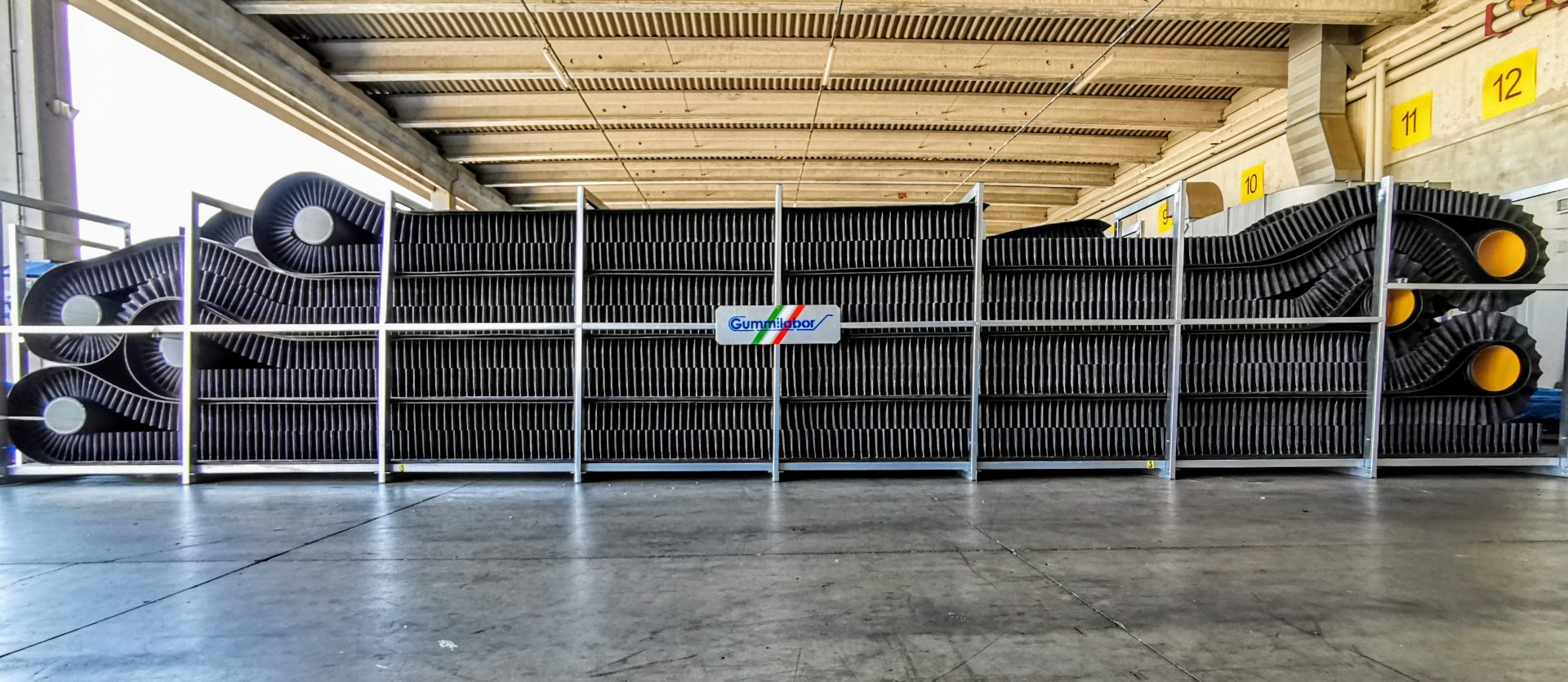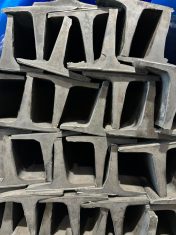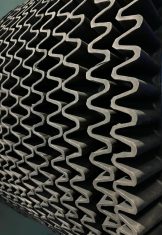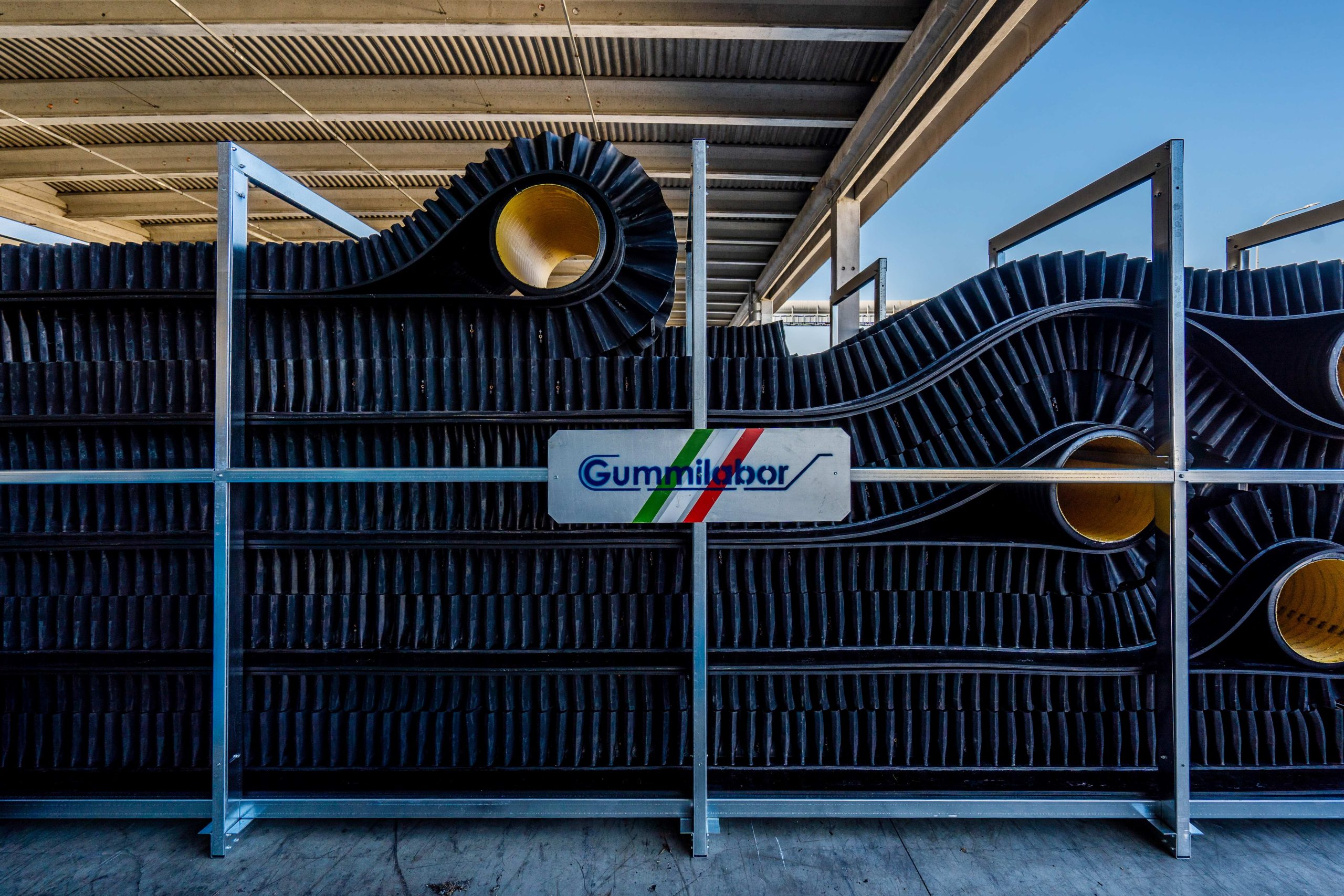
Gummibord
The Gummibord rubber belt consists of a base belt with a certain class of suitable resistance and a variable width, on which they are applied undulated side-walls and transversal cleats to convey materials in case the slope is higher than 15°.Technical characteristics
The Gummibord rubber belt stands out for its innovative and versatile design, engineered to ensure high efficiency in handling bulk materials, even under complex operating conditions. It consists of a base belt with a reinforced carcass, whose strength class and width can be customized based on plant requirements and the type of material being transported.
A key feature of the Gummibord system is the presence of undulated side-walls, designed to prevent material spillage during transport, even along curved sections or particularly steep inclines. Additionally, to enable safe handling on slopes greater than 15°, cleats are applied to the belt, securing the material and preventing losses or slippage even in critical conditions.
This combination of belt, undulated side-walls and cleats, makes the Gummibord system particularly suitable for complex and inclined paths, enhancing operational efficiency and reducing the risk of material loss or damage during transport.
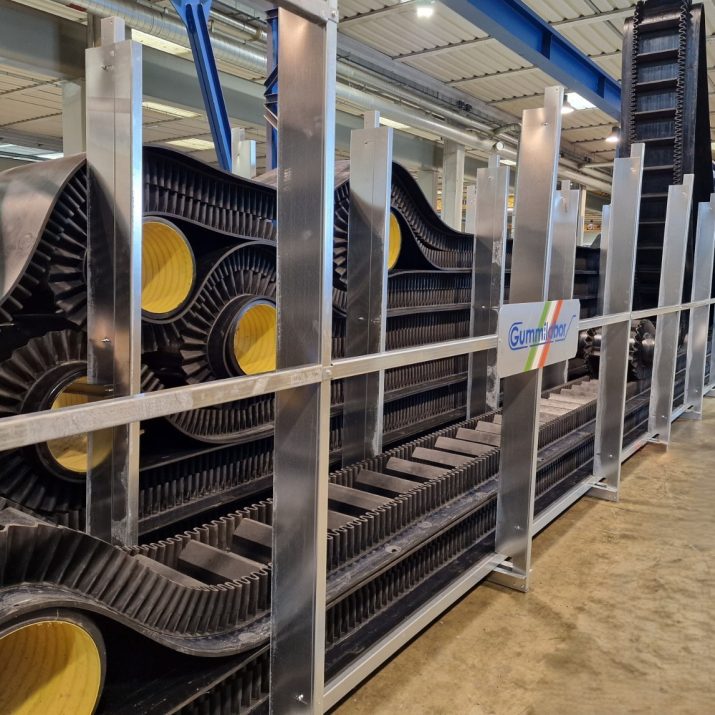
Customized handling
The handling of bulk materials such as sand, gravel, and minerals requires reliable and safe solutions, especially in industrial plants where space is limited and the reduction of dust and noise is essential.
Gummibord rubber belts represent an innovative alternative to traditional systems, enabling the transport of material along winding paths with inclinations ranging from 0° to 90°, while also providing dust and noise shielding. With their undulated side-walls and cleats, Gummibord belts ensure high capacities, safe handling, and reduced environmental impact.
These belts are ideal for those seeking an efficient solution for material handling in various industrial sectors, offering extensive customizated options to meet specific needs.
Thanks to their robust and modular structure, Gummibord belts are used in numerous industrial sectors and adapt to various operational needs, even on complex routes with inclinations of up to 90°.
The design, featuring corrugated side-walls and cleats, ensures secure material transport, preventing spillage and reducing system wear. They are used in various configurations, offering tailor-made solutions for the safe and efficient handling of bulk materials.
The main applications include:
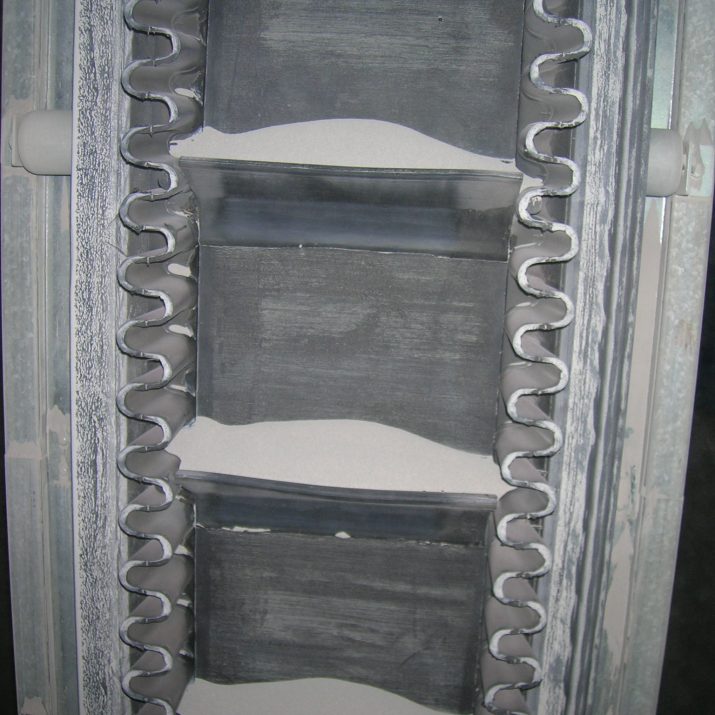
Advantages of Gummibord belts:
- High capacity on complex routes: Gummibord belts are designed to ensure efficient handling of large quantities of material, even in situations where the routes are complex and intricate. These systems adapt perfectly to tight curves, steep inclines, and sections with varying slopes, providing continuous operation without interruptions or load loss.
- Safe handling at reduced speeds: Operating at reduced speeds ensures the stability of the transported material, preventing spills or dispersion during the journey, and preserving the integrity of the goods at every stage of movement.
